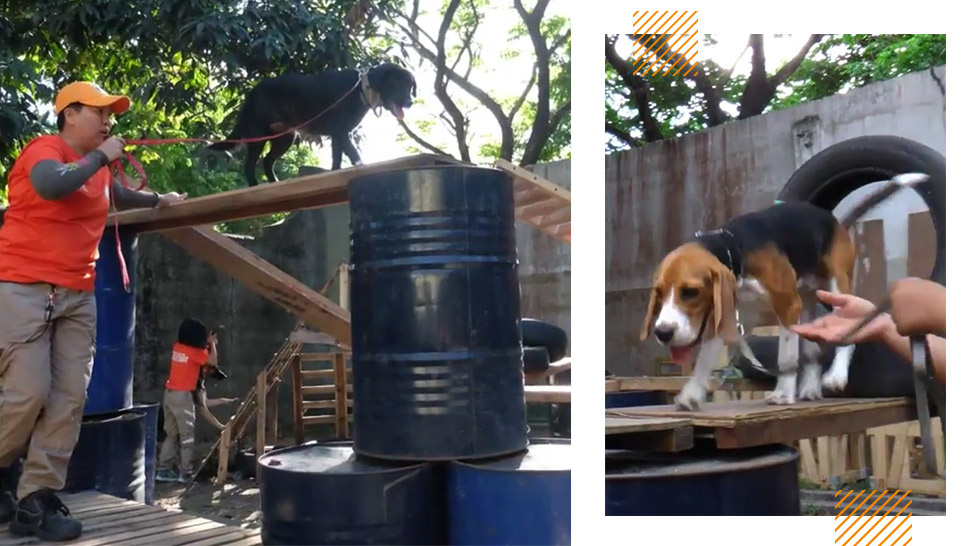
Mastering Obedience: Exploring Canine Obedience Schools in the Philippines
Introduction:
Introducing a dog into your life is a delightful experience, but ensuring they’re well-behaved and obedient is essential for a harmonious relationship. Canine obedience schools offer structured training programs to help your furry friend develop the necessary skills. In this guide, we’ll delve into the landscape of canine obedience schools in the Philippines, exploring their importance, evaluating criteria, and finding the right fit for your dog.
1. Understanding the Importance of Canine Obedience Training:
Canine obedience training goes beyond teaching commands; it establishes clear communication between you and your dog, fosters mutual respect, and enhances safety. Well-trained dogs are more enjoyable companions, have better social interactions, and are less likely to engage in destructive behaviors. Studies have shown that dogs who undergo obedience training are happier and more confident, leading to a better quality of life.
2. Criteria for Evaluating Canine Obedience Schools:
When selecting a canine obedience school, it’s crucial to consider various factors. These include the qualifications of trainers, the training methods employed, the school’s reputation, class sizes, and the overall environment. Trainers should be certified and experienced in positive reinforcement techniques, creating a supportive learning environment for both dogs and owners.
3. Top Canine Obedience Schools in the Philippines: A Comparative Overview:
Several canine obedience schools in the Philippines stand out for their quality training programs. Through a comparative analysis, we’ll explore the strengths and weaknesses of each school, considering factors such as curriculum, facilities, success rates, and client satisfaction. Examples might include ABC Dog Training Center and Waggin’ Tails Dog Training School.
4. Curriculum and Training Methods Offered by Leading Schools:
Leading canine obedience schools offer diverse training programs tailored to meet the needs of different dogs and owners. These programs typically cover basic obedience commands, leash manners, socialization, and behavior modification. Positive reinforcement techniques, such as clicker training and reward-based methods, are commonly employed to encourage desired behaviors and build a strong bond between dog and owner.
5. Testimonials and Success Stories from Previous Clients:
Testimonials and success stories from previous clients provide valuable insight into the effectiveness of canine obedience schools. These firsthand accounts showcase the transformative impact of training on dogs’ behavior and their owners’ lives. By sharing real-life experiences, potential clients can gain confidence in their decision to enroll their dogs in a specific program.
6. Accessibility and Location Considerations for Pet Owners:
Accessibility and location are essential factors to consider when choosing a canine obedience school. Schools located in convenient areas with ample parking and easy access for pet owners make attending classes more manageable. Additionally, schools that offer both in-person and online training options provide flexibility for pet owners with busy schedules or those residing in remote areas.
7. Cost Comparison and Affordability of Different Programs:
The cost of canine obedience training programs varies depending on factors such as the duration of the program, the level of training, and the reputation of the school. While some programs may seem more expensive upfront, they may offer greater value in terms of comprehensive training and long-term results. Pet owners should weigh the cost against the benefits and consider it an investment in their dog’s well-being.
8. Additional Services and Resources Provided by Canine Obedience Schools:
Beyond basic obedience training, many canine obedience schools offer additional services and resources to support pet owners and their dogs. These may include advanced training classes, specialty workshops, private consultations, and access to online resources and community forums. Such offerings enhance the training experience and provide ongoing support for pet owners.
9. Tips for Maximizing Your Dog’s Training Experience:
To maximize the effectiveness of canine obedience training, pet owners should actively participate in classes, practice training exercises at home, and maintain consistency in their approach. Clear communication with trainers, patience, and positive reinforcement are key to achieving desired results. Pet owners should also prioritize their dog’s well-being and avoid punishment-based training methods that may harm the bond between dog and owner.
10. Conclusion: Finding the Right Canine Obedience School for Your Furry Companion:
Choosing the right canine obedience school is a significant decision that can shape your dog’s behavior and your relationship with them for years to come. By considering essential factors such as training methods, trainer qualifications, and client testimonials, pet owners can find a school that meets their needs and helps their dog reach their full potential. With dedication and commitment, mastering obedience becomes an achievable goal for every dog and owner pair.
Thank you for your sharing. I am worried that I lack creative ideas. It is your article that makes me full of hope. Thank you. But, I have a question, can you help me?